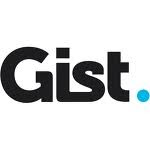Editor’s Note: Ed Laczynski is Founder and CTO of LTech, a member of the Google Authorized Reseller Program. We asked Ed to share his experiences and successes with program and why he believes that the cloud is where companies need to be.
In 2005,
LTech was a local systems integrator and development shop with a focus on Microsoft solutions. Satisfied with the Microsoft technology platform at the time but crowded out by a sea of competition and frustrated by a lack of innovation, we were introduced to Google through a Google Search Appliance integration for a customer.
We learned about
Google Apps and started working with the platform in 2007 to provide deployment and migration services for clients. So when the
Google Apps Reseller Program was announced in 2009, LTech already had an experienced team in place and a Single Sign-On product developed specifically for Google Apps customers.
The Microsoft Partner Program was and is a great program for developers in terms of providing SDKs and IDEs, but it was difficult to navigate and even more difficult for us to get support and build a true partnership. The Google Enterprise Program however, was easy to navigate and make connections. I am sure being early to the program helped, but Google gave us the support and confidence we needed to invest and build a successful reselling business. Google provided detailed training which allowed our technicians and developers to learn the platform and build out our delivery teams.
By mid-2008, we decided to stop actively offering Microsoft-based collaboration solutions to customers. This was a big move for us, and a bit scary, but the Microsoft platform wasn’t evolving at the pace our customers demanded. The Microsoft Partner Program didn’t foster the same type of opportunity as Google for a start-up company like ours. Our Google Apps business was taking off and we haven’t looked back. We have grown to a multi-million dollar business with dozens of cloud technologists and a national footprint, helping to pave the way for business adoption of cloud.
The Cloud Transition Opportunity
We are investing in the cloud because it is the future of business technology. This is one of those rare transitional moments in technology – near unlimited computing power is being made available to both experts and non-experts alike. Whole technology ecosystems and industries will be transformed by it. Just look at what leaders like Google, Amazon, and Salesforce have accomplished in a few short years – and the investments they've made.

Source: LTech 2010
At LTech, we’re seeing certain industries adopt Google Apps faster than others. We are responding to this by developing vertically focused solutions. For example, our
Google Apps for Real Estate program bundles Google Apps, Agent Website Templates, and
Tungle.me calendar sharing.
Why are these businesses adopting Google Apps? It’s widely known that Google Apps is
more cost effective compared to on-premise software, our customers are also taking advantage of the rapid innovation pace for productivity gains and business transformation.
Google Apps isn't just email. Products like Google Sites and Google Docs can deliver spontaneous collaboration capabilities for employees that were never connected before. For example, the
new Google Docs interface takes real time collaboration to the next level by allowing you to see other people’s changes character-by-character as they type. No need to send attachments back and forth, and it is web-standards and mobile friendly. That sort of innovation is key to enterprise adoption of cloud platforms.
The Google Apps Partner Program
While I can't reveal exact numbers, the positive growth of Google Apps sales in our business is exciting and keeping us charged up about the opportunity ahead as a leading Google Apps Reseller and Google Enterprise Partner.

Source: LTech 2010
The Google Authorized Reseller Program has helped us grow from a small systems integrator to a leader in cloud products and services. We've built a great relationship with Google that is mutually beneficial, and we get support when and where we need it. In particular, the Google Apps developer relations team at Google has been instrumental in helping us to build enterprise quality products like
Power Panel for Google Apps and
Single Sign On. The
documentation and API support available is fantastic, and the community and ecosystem around the Google Apps suite is strong.
Ed Laczynski
Founder and CTO, LTech
Posted by Pat Spears, Google Apps Reseller Team





















